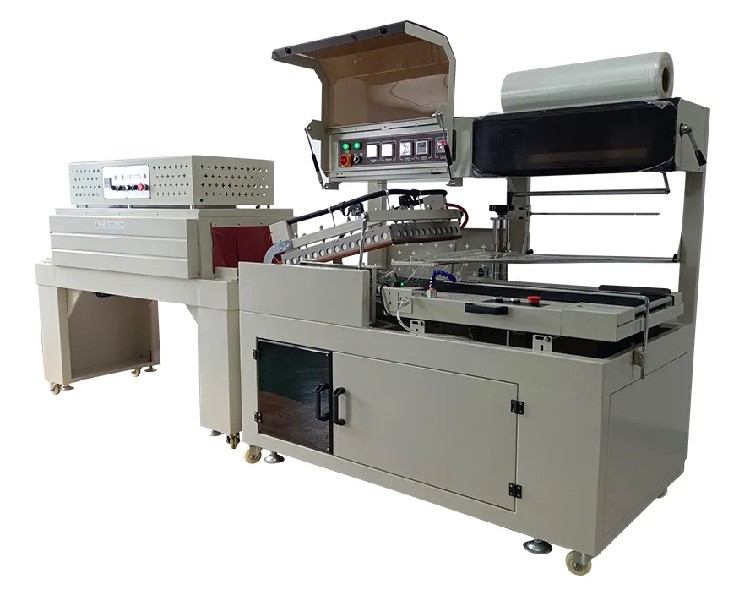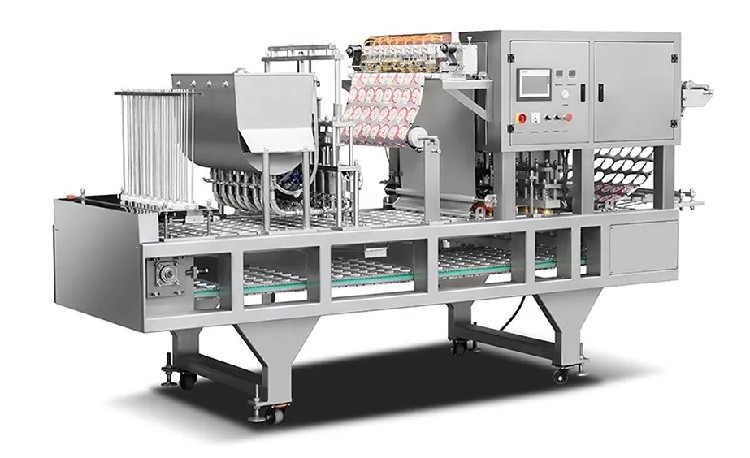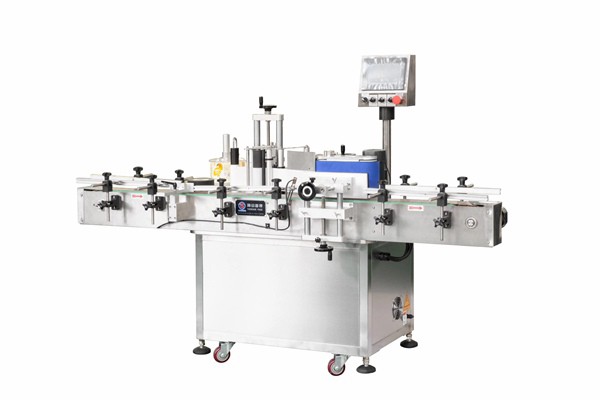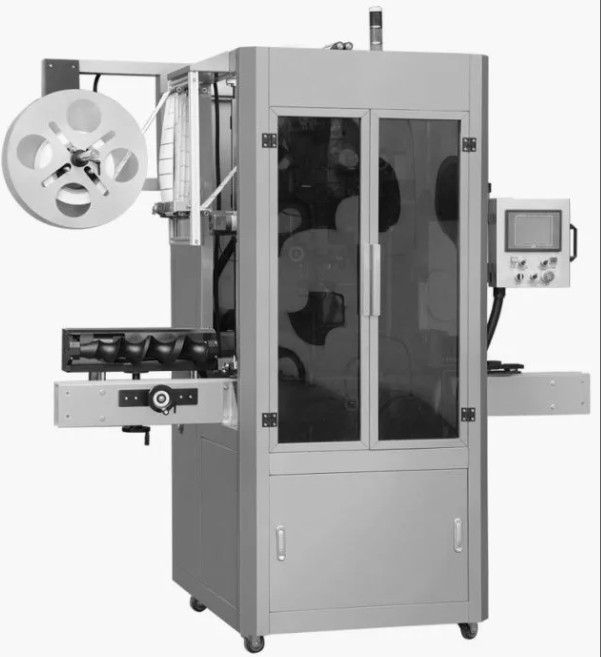How Automated Labeling Systems Revolutionize Modern Operations
Product description
In an era where efficiency and accuracy are not just desired but demanded, the humble product label carries immense weight. It is the final touchpoint in production, the silent salesperson on the shelf, and the key to traceability in complex supply chains. Manual labeling processes, prone to human error and speed limitations, are increasingly becoming a bottleneck. This is where the automated labeling machine emerges not merely as a piece of equipment, but as a strategic asset for businesses aiming to scale, comply, and compete. This guide delves into the inner workings of these sophisticated systems, exploring how they can transform your operational workflow from end to end.
What Exactly is an Automated Labeling Machine?

An automated labeling machine is a technologically advanced device designed to apply labels to products, packages, or containers with high speed, precision, and consistency, without the need for direct human intervention. These systems integrate seamlessly into production and packaging lines, receiving a product, applying a label according to pre-programmed specifications, and sending it on its way—all in a fraction of a second. Far from being a simple applicator, a modern automated labeler is a smart system comprising a conveyor, a labeling head, a control system, and often sophisticated sensors. Its primary purpose is to eliminate the variability and inefficiency of manual labeling, ensuring every product is perfectly labeled, every time.
Core Features That Define High-Performance Labeling Systems
The effectiveness of an automated labeling machine hinges on a suite of core features engineered for reliability and adaptability. Understanding these components is key to appreciating their value.
Precision Engineering and Application: The heart of the machine is its application mechanism. Whether using wipe-on, blow-on, or tamp-blow methods, high-quality systems are built with precision actuators and controls to place labels accurately to within a millimeter. This eliminates unsightly misalignments, wrinkles, and bubbles that can undermine product professionalism.
Advanced Sensor Technology: Sophisticated sensors, such as photoelectric or vision systems, detect the presence and position of each product. They trigger the labeling head at the exact right moment, ensuring the label is applied to the correct spot, even on irregularly shaped items. This technology is crucial for handling variable container sizes and ensuring continuous operation.
User-Friendly Control Interface: Modern machines feature intuitive Human-Machine Interfaces (HMIs), typically touchscreen panels. These interfaces allow operators to easily set up labeling parameters, switch between different product labeling jobs, monitor machine performance in real-time, and diagnose issues quickly, minimizing downtime.
Robust Construction and Versatility: Designed for demanding industrial environments, these machines are constructed from durable materials like stainless steel and anodized aluminum. They are built to withstand constant use and are often designed with modularity in mind, allowing for easy integration with other line equipment and adaptation to future labeling needs.
High-Speed Capability: Speed is a primary driver for automation. These systems can apply hundreds, even thousands, of labels per hour, far exceeding the capacity of even the most skilled manual worker. This directly increases your production line's throughput and overall capacity.
The Tangible Business Advantages of Automating Your Labeling Process
Investing in an automated labeling system delivers a compelling return on investment across multiple facets of your business.
Unmatched Accuracy and Consistency: By removing the human element, you eliminate the risk of misapplied, skewed, or missing labels. This consistency enhances your brand's image, reduces customer complaints, and prevents the costly rework associated with labeling errors.
Significant Labor Cost Reduction and Reallocation: Automating a repetitive, manual task frees up your workforce to focus on higher-value activities like quality control, machine oversight, and process improvement. This leads to better labor utilization and can reduce long-term operational costs.
Enhanced Operational Efficiency and Scalability: The high-speed nature of these machines accelerates your entire packaging line, allowing you to meet tight deadlines and scale production up or down without the logistical challenge of hiring and training temporary labelers. Your line's bottleneck shifts, enabling greater overall output.
Improved Regulatory Compliance and Traceability: For industries like food, pharmaceuticals, and chemicals, labeling accuracy is often a legal requirement. Automated systems ensure critical information—such as batch numbers, expiry dates, and ingredients—is applied correctly every time, supporting compliance and simplifying recall processes if necessary.
Diverse Applications Across Key Industries
The versatility of automated labeling machines makes them indispensable in a wide range of sectors.
Food and Beverage: From applying nutritional facts on packaged foods to labeling bottles and cans with batch codes and best-before dates, these systems ensure compliance with strict food safety regulations and maintain high-speed production lines.
Pharmaceuticals and Healthcare: Accuracy is paramount. Automated labelers apply precise dosage information, patient-specific data, and tamper-evident seals to bottles, vials, and boxes, playing a critical role in patient safety and regulatory adherence.
Cosmetics and Personal Care: In a visually driven market, perfect label placement on bottles, jars, and tubes is essential for brand perception. Automation ensures a flawless, premium appearance for every product.
Logistics and Warehousing: Applying shipping labels, barcodes, and tracking information to parcels automatically is fundamental to modern e-commerce and distribution centers, enabling rapid sorting and accurate delivery.
Frequently Asked Questions About Automated Labeling Machines
Q1: What types of labels can an automated machine handle?
A1: These systems are highly adaptable and can typically handle a wide range of label materials, including paper, vinyl, polyester, and polypropylene. They can apply pressure-sensitive labels (the most common type), wrap-around labels, and even more complex formats like sleeve labels, depending on the machine's configuration.
Q2: How difficult is it to change over between different label sizes or products?
A2: Modern machines are designed for quick changeover. Many feature digital settings where operators can recall pre-programmed jobs from the HMI, making adjustments to the label holder and applicator head in minutes. This facilitates efficient small-batch production runs.
Q3: Can these machines print and apply labels on-demand?
A3: Absolutely. Many automated labeling systems can be integrated with a print engine, such as a thermal transfer or inkjet printer. This creates a "print-and-apply" system that can generate variable data labels—like unique serial numbers, barcodes, or expiration dates—and apply them immediately, which is vital for track-and-trace applications.
Q4: What is the typical maintenance requirement for an automated labeler?
A4: Maintenance is generally straightforward and revolves around routine cleaning to prevent adhesive buildup, checking for wear on consumable parts like the peel plate or applicator pad, and ensuring sensors are clean and properly aligned. A preventive maintenance schedule is recommended to ensure long-term reliability.
Q5: Are these systems suitable for small businesses or startups?
A5: While the investment is significant, the market offers a range of solutions, including more compact and economical semi-automatic models. For a growing business where labeling volume or accuracy is becoming a challenge, even a basic automated system can provide a rapid return by reducing errors and saving labor, making it a scalable solution for businesses of all sizes.
Conclusion: Embracing the Future of Packaging
An automated labeling machine is more than just a productivity tool; it is a commitment to quality, efficiency, and growth. In a competitive global market, the consistency and reliability it brings to the final stage of packaging are invaluable. By ensuring that every product that leaves your facility is perfectly identified and professionally presented, you protect your brand integrity, satisfy regulatory demands, and build a stronger, more resilient operation. The question for modern businesses is no longer if they should automate their labeling process, but when.
Recommended products




